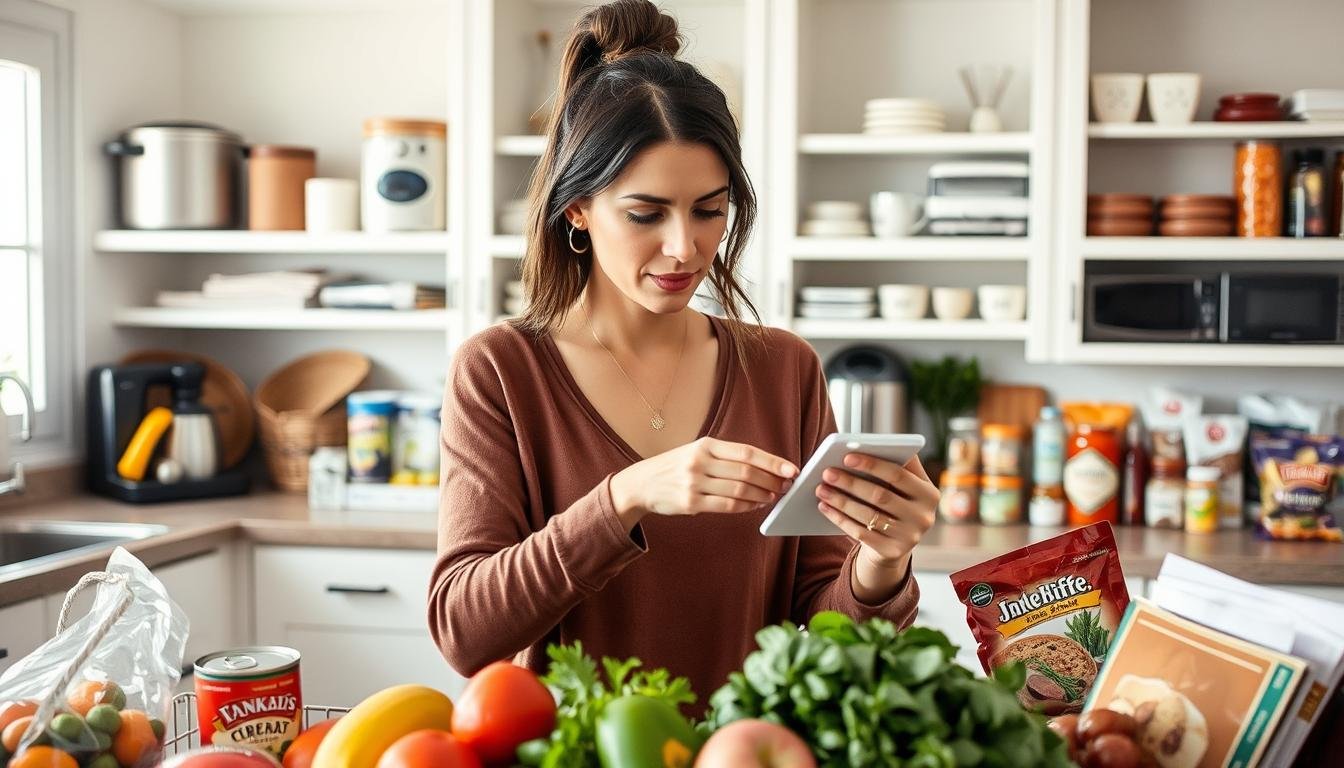lowering grocery bills is a big step towards saving money and living more frugally. With costs going up, it’s key to find ways to spend less on things we don’t need.
By using a few easy strategies, people can cut their grocery costs a lot. This doesn’t mean they have to buy lower quality food. This article will share useful tips to help you save money on groceries.
Key Takeaways
- Simple strategies for reducing grocery expenses
- Practical tips for adopting frugal living
- Methods for saving money on everyday purchases
- Techniques for lowering grocery bills without compromising quality
- Long-term benefits of cutting back on grocery expenses
My Strategic Meal Planning Approach
I’ve cut my expenses by adopting a strategic meal planning approach. This involves several key strategies. They help reduce grocery bills without sacrificing meal quality.
Creating a Weekly Menu Based on Sales
I plan my weekly menu around items on sale at local grocery stores. This saves money and reduces food waste. I check weekly ads and plan meals accordingly.
Inventory Management to Prevent Waste
Inventory management is key. I track what I have at home to avoid buying duplicates. I regularly check my pantry, fridge, and freezer.
Batch Cooking to Maximize Ingredients
Batch cooking is another strategy. Cooking meals in bulk uses ingredients efficiently and reduces purchases. It also saves time during the week.
Smart Shopping Tactics That Saved Me Thousands
I learned to cut down on grocery costs by using smart shopping strategies. Being more aware of my shopping habits helped me save a lot.
Store Comparison and Price Matching
Comparing prices at different stores and using price matching policies is key. It helps me find the best deals.
Seasonal and Bulk Buying Strategies
Buying seasonal produce and buying in bulk are also important. They help reduce waste and save money.
Generic vs. Name Brand: What’s Worth It
Choosing between generic and name-brand products depends on the item. For basics like milk and bread, generic brands are just as good. They offer big savings.

How I Cut My Grocery Bills in Half with Digital Tools
Using digital tools has greatly reduced my grocery costs. Technology helps me shop smarter, waste less, and find more savings.
Cashback and coupon apps have been a game-changer. Apps like Ibotta and Fetch Rewards give me cash back on groceries. It’s a simple way to save money.
Cashback and Coupon Apps I Swear By
Cashback apps are now a part of my shopping routine. Ibotta gives cash back on many items, from milk to cleaning supplies. Fetch Rewards lets me earn points on all grocery buys, redeemable for gift cards or cash.
Store Loyalty Programs Worth Joining
Store loyalty programs also offer great value. CVS ExtraCare and Walgreens Balance Rewards give me special discounts and rewards. They also let me get early access to sales, making shopping more rewarding.
“Loyalty programs can offer substantial savings, especially when combined with other discounts,” says a retail expert.
Timing Purchases for Maximum Discounts
Timing is key for getting the best deals. I plan my shopping around sales and stock up on non-perishable items when they’re cheapest. This strategy has helped me save a lot on groceries.
By using these digital tools and strategies, I’ve cut my grocery costs in half. It’s made a big difference in our household budget.
Conclusion: Sustainable Savings for the Long Term
By planning meals smartly and using digital tools, cutting grocery bills in half is possible. These steps not only save money but also lead to a more sustainable lifestyle.
Long-term savings need consistent effort. Creating a weekly menu based on sales and using cashback apps helps a lot. This way, people can cut their grocery bills down, leading to a more stable financial future.
These habits make us think more about what we buy, fitting well with frugal living. As we get better at these strategies, we save more money and live more sustainably. This leads to lasting savings.
